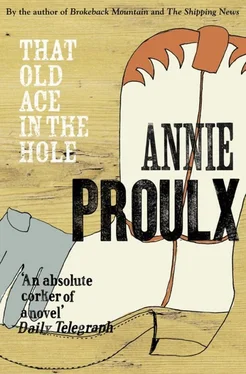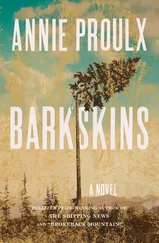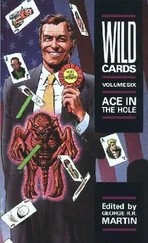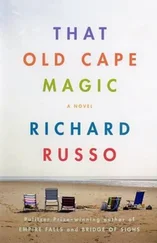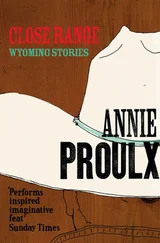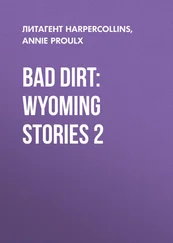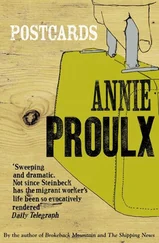In the bottom of the box was a chef’s toque, stained and crushed. That’s what his father’s life had come down to, yellowed girlie pix and a flat hat. He intended to take care something of that nature did not happen to him.
For a while he collected sheriff memorabilia. He had a collar worn by one of Sheriff Andre Jackson Spradling’s hounds. He had an axe that the escaped convict Jason Shrub used to bludgeon his way out of the Comanche County jail, and a photograph of the gun that a desperate prisoner snatched from Sheriff C. F. Stubblefield and then used to shoot the sheriff’s tongue. He had one of Buck Lane’s florid neckties and a pack of greasy cards from a Borger gambling den raid. He had a windmill weight in the shape of a star. He had a set of brass knuckles used by a deputy sheriff from Bryant, Oklahoma. There was a heavy chain used to lock prisoners to trees from the days before the Woolybucket jail was built.
Hugh Dough was reelected term after term. He did not, as some sheriffs, rely on easy banter and warmth to disarm, but had developed a mean, piercing stare and a reputation for being a trigger-happy marksman. The credulous believed in vast acreages for paradise and inferno, one aloft, the other down the devil’s adit in the hot rocks, both unfenced open range. But the sheriff knew that the properties had been long ago broken up and that frayed patches of heaven and hell lay all over Texas. Most rural crimes, he believed, happened in vehicles at the Dairy Queen and at roadside rest areas, the latter having social uses that might surprise the highway landscape planners. Then there were the lowlives who stole drip gas from the pipeline, and every town had its set of wife beaters. To track the former he listened for sounds of engine knock in local cars, a side effect of drip gas use.
He was a good customer of the state crime lab and, with their help, had once solved an ugly crime in which a naked and severely bruised young ranch hand was discovered dead at the foot of a remote windmill. There were scores of circular marks on the victim’s skin, and on a wild hunch Hugh Dough asked the crime lab to compare them with the decorative conchas on the ranch owner’s handmade chaps. They matched.
There were notches on his gun handle. He had black belts and diplomas in esoteric martial arts; in his hands a stick was a lethal weapon. In Woolybucket County he presided over certain legal rites, heard confessions, arbitrated disputes, observed the community, knew when a family was in difficulties, and he guided the errant back onto the path, sometimes forcibly.
Hugh Dough disliked politics and it galled him to run for office. For many years he had run against Tully Nelson, a six-four bully who, after his last defeat, moved thirty miles to sparsely populated Slickfork County where he was handily elected, and hence a rival sheriff Hugh Dough also disliked teenage punks, and thought the best deterrent for a young hoodlum – the younger the better – was a night or two in the county clink. He had once locked up the state’s attorney’s bespectacled nine-year-old son, whom he caught throwing rocks at a dog chained to its doghouse.
“How’d you like it, then, was you chained up and some four-eyed little bastard come along and start peggin rocks at you? Believe I’ll have to educate you.” And he handcuffed the kid to a bicycle rack in front of the courthouse, snatched off the kid’s glasses and put them on his own blinking eyes, saying, “Now let’s us pretend I’m you and you’re that poor dog,” picked up a small stone and hurled it. It caught the kid on the upper arm and set off shrieks and blubbering that brought heads to the windows. A few more stones and the kid was hysterical.
“Guess I will have to lock you up until you quiet down,” he said and dragged the bellowing child into the jail, kicked him into a cell. Of course he paid for it later, as the state’s attorney was a formidable enemy.
“Ain’t that the squeeze of it?” said the sheriff on the phone to his sister Opal.
“At least you got the satisfaction,” she said, and in the panhandle satisfaction of grievances counted for something.
Perhaps the most irritating of his duties, aside from chasing down old ladies’ reports of strangers on the highway, was keeping a balance in the ongoing feud between Advance Slauter and Francis Scott Keister, two ranchers of opposing personalities and ranch philosophies and styles. What puzzled Sheriff Hugh Dough was their lack of kin recognition, for the Slauters and the Keisters had intermingled generations back when both clans lived in Arkansas. Old Daniel Slauter had married Zubie Keister in 1833, and although she was only the first of his five wives, she bore him five of the thirty-two children he claimed to have fathered, and a marked Keister look – long ringy neck, circled eyes, spider fingers and bad teeth – had entered the Slauter genes. Later more Slauter-Keister crossings further marred the stock.
Advance Slauter and Francis Scott Keister had loathed each other since grade school (which old-timers called “cowboy college” in their sarcastic voices) when Keister, the product of an intensely religious upbringing, a 4-H leader and a Junior Texas Ranger, overheard Advance Slauter, muscular lout extraordinaire, say that he was screwing both his younger sisters and anybody who wanted a piece of the action should show up at the family ranch at six A.M. with a quarter in hand and tap on Ad’s window for admittance. Hugh Dough had sniggered knowingly, later inspired to do his own homework, but Francis Scott Keister was outraged on behalf of pure girlhood. A terrific fight followed, broken up by the principal. Both boys refused to say what had started it. In fact, Ad Slauter was entirely puzzled by the attack. So the feud began and had persisted over thirty years, each man coming by turn into the sheriff’s office to report the latest atrocity. Sheriff Hugh Dough would hear the complainant out and take notes, file them in the two voluminous dossiers of increasingly sophisticated criminal misdemeanor. The assaults were mostly rock-throwing and name-calling until high school when both wangled broke-down old hoopys to drive. Now buckets of paint were thrown, tires shot out, windshields broken. When Francis Scott Keister went to the Wichita Falls stock show with the 4-H group he bought a custom-designed bumper sticker that read I AM A PIECE OF SHIT and pasted it on the back of Slauter’s car. Ad Slauter responded, on the family vacation trip to Padre Island, by visiting the marina store where he stole three aerosol cans of expandable flotation foam and he used them to fill the engine compartment of Keister’s vehicle. He signed Keister up for subscriptions to gay pornographic magazines (“Bill me later”). Keister released black widow spiders on Slauter’s windowsill. Slauter poured sixteen gallons of used crankcase oil on Keister’s front porch.
As grown men both Francis Scott Keister and Advance Slauter ran cow-calf cattle operations but there were few similarities beyond the fact that both men’s cows were quadrupeds. Francis Scott Keister was a scientific rancher, methodical, correct, progressive. He had been born in Woolybucket and was belligerent and aggressive about being a “panhandle native,” loathed all outsiders.
Keister lived with his wife, Tazzy, and only child, fourteen-year-old Frank, a lanky boy with wing-nut ears and broom-handle neck. He often told him to go help his mother in the kitchen as he was no help with machinery or cows. Their house was large, of the style called “rancho deluxe,” the only building on the ranch not made entirely of metal. His corrals and catch pens were of enameled steel in pleasing colors. The machine shop and calving barn were heated and well-lighted, freshly painted every year. His handsome Santa Gertrudis cattle displayed rich mahogany coats and backs as level as the ground they trod. Ninety-four percent of his cows dropped a calf every spring. He kept meticulous breeding records on complicated computer charts. The heifers were artificially inseminated with semen from champion bulls, turned out on newly sprouted winter wheat in the spring, carefully moved from pasture to pasture during the summer. Keister supplemented the grass with soy meal, beet pulp, molasses, sorghum and sweet-corn stover, corn, cottonseed hulls, beet tops, cannery waste, anhydrous ammonia, poultry packer by-products (including feathers), peanut meal, meat meal, bonemeal, lint from the family clothes dryer. To this smorgasbord he added a battery of growth stimulants including antibiotics and the pharmaceuticals Bovatec and Rumensin, as well as the implants Compudose, Finaplix, Ralgro, Steer-oid and Synovex-S. At eighteen months his big steers were ready for market and he received the highest prices for them.
Читать дальше
